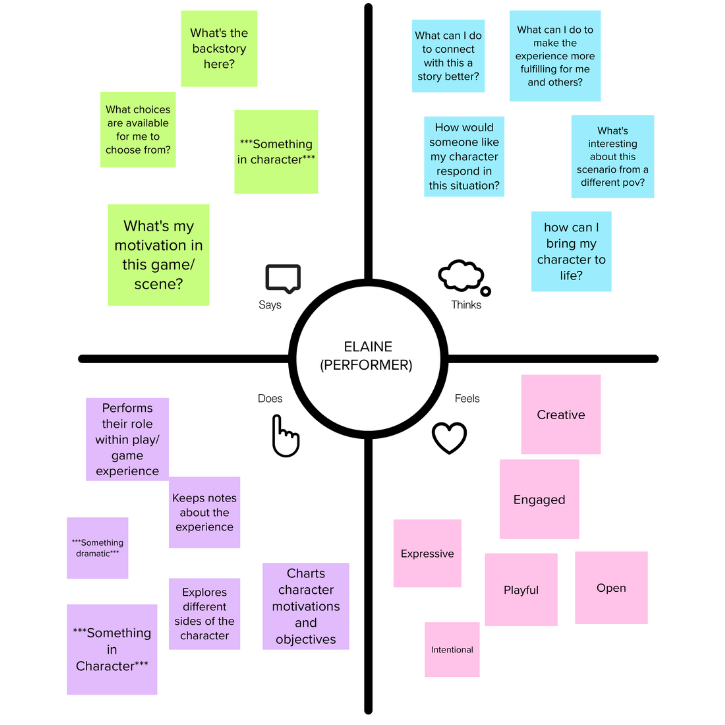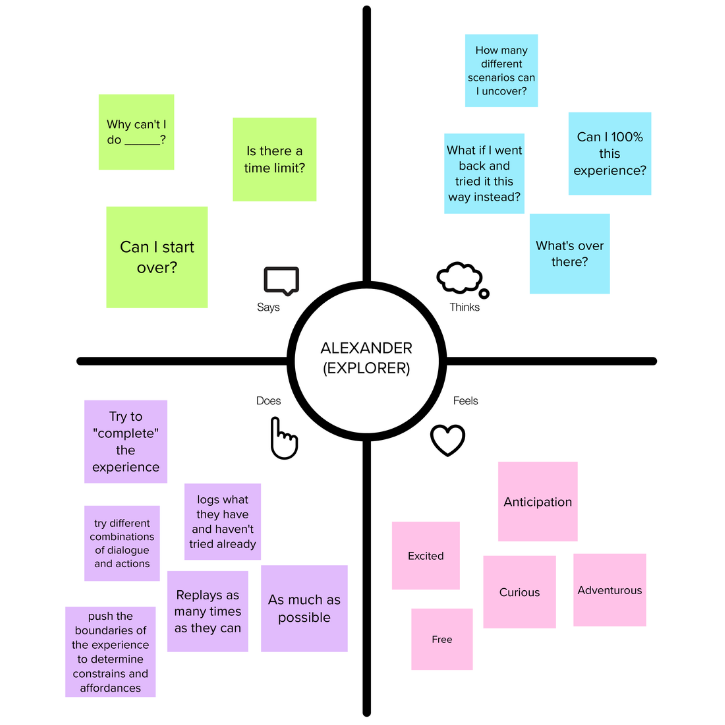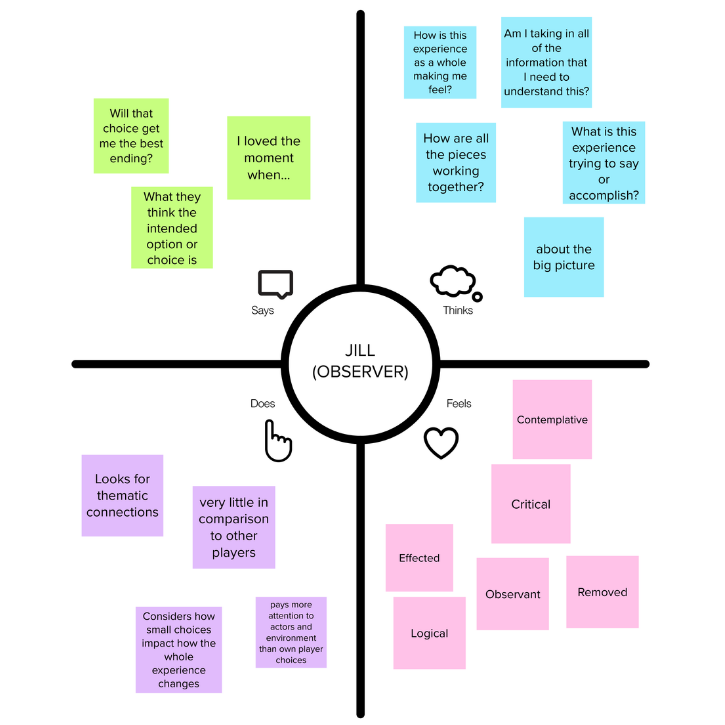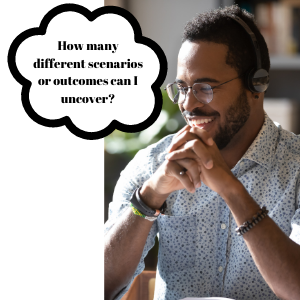This is part of a series of posts in conjunction with GAM 550: Incubation Studio, a graduate level course within DePaul University’s MFA Game Design program. These posts will follow my process in incubating a design concept to bolster engagement with performance arts, with a particular focus on how to integrate theatrical practices within digital game spaces.
After completing a stakeholder map and conducting stakeholder interviews (outlined in previous post), I moved on to empathy mapping and creating personas of potential users.
Utilizing the information and insights from my interviews, I started by identifying three types of users for my proposed design, a live video game where the roles of NPC’s (Non-player characters) are performed by actors. The majority of my interviews were with those who have performance and event management experience. In creating user personas, my goal was to tackle how different people might approach the experience from the “player” side as opposed to being a performer or designer. Even so, my interviews highlighted that performance often finds itself into play and vice versa, which I tried to reflect in how I modeled my three different user categories. Ultimately, I arrived at my personas: the Performer, the Explorer, and the Observer.
Empathy Mapping
I created an empathy map for each of my personas, which are shown below. With each individual persona in mind, I considered what they would be thinking, feeling, doing, and saying while engaging with my design.
The Performer
The performer enjoys taking on a specific role during play. They care a lot about bringing a character to life and enjoy games more when they feel there is a narrative stake to personally engage with.
 The Explorer
The Explorer
The Explorer wants to do and see as much as possible during play. Uncovering all of the different facets of a play space and relevant mechanics is exciting for them.

The Observer
The Observer enjoys watching things unfold and is invested in the elegance of a wholistically designed experience. They don’t need a lot of interactivity in order to be engaged with an experience.
 Persona Profiles
Persona Profiles
Empathy mapping helped me to start visualizing the types of users that might engage with my design and highlighted what their individual desires, constraints, and concerns might be. In order to more fully engage with these observations, I created fictionalized persona profiles based on my empathy maps that imagine a specific user that fits into each of my three categories.
Elaine – The Performer

Age – 27
Work – Lawyer
Description – Elaine is a lawyer by day and an insatiable consumer of stories during their free time. They love all mediums of storytelling, but especially theater because they’ve always had a love for performance. They came to video games during their early adulthood and love RPGs because they like to embody the character they play as.
Goals for play experience –
- Develop an imagined character/persona through role play
- Engage in creative self-expression
Alexander – The Explorer

Age – 33
Work – Information Technology
Description – Alexander works in Information Technology and has been playing video games most of his life. Both in work and in his play experiences, he likes to take things apart and understand as much about them as possible. He hasn’t been to many theatrical events, but he likes to try new things.
Goals for play experience –
- Discover as much of the game world as possible
- Have a deeper experience of the game than others
Jill – The Observer

Age – 39
Work – Food Service
Description – Jill works in food service and
loves people watching. She’s very systems-minded and
particularly enjoys seeing how all the pieces of a whole come
together. Jill really loves theater, going to the movies, and even watching her friends play video and board games. She doesn’t feel the need to be an active participant in an experience to get something out of it.
Goals for play experience –
- Observe the experience from multiple angles to better understand full picture
- Consume the experience as a complete product
